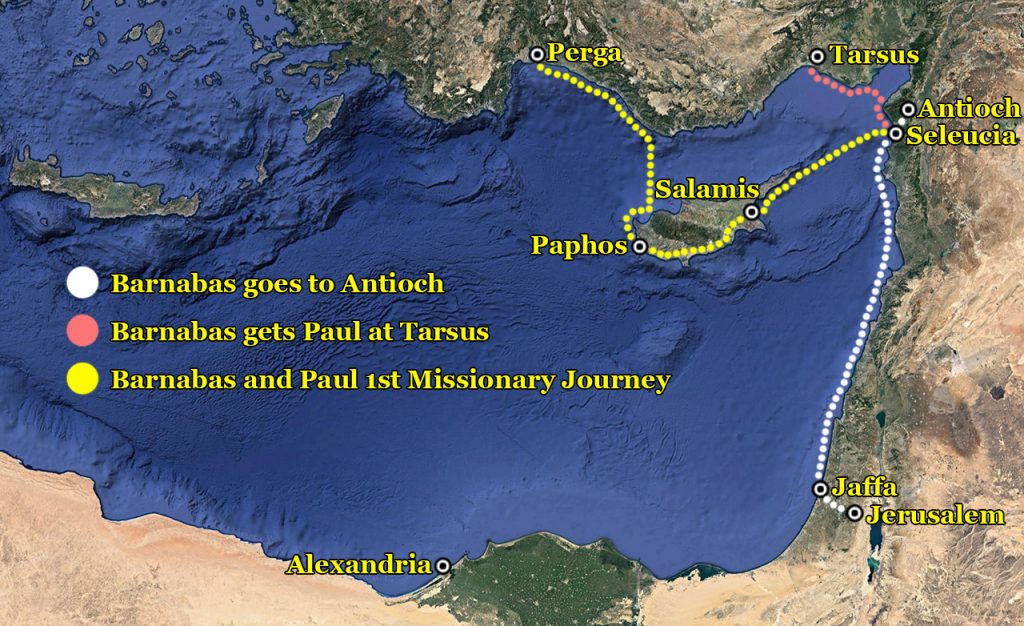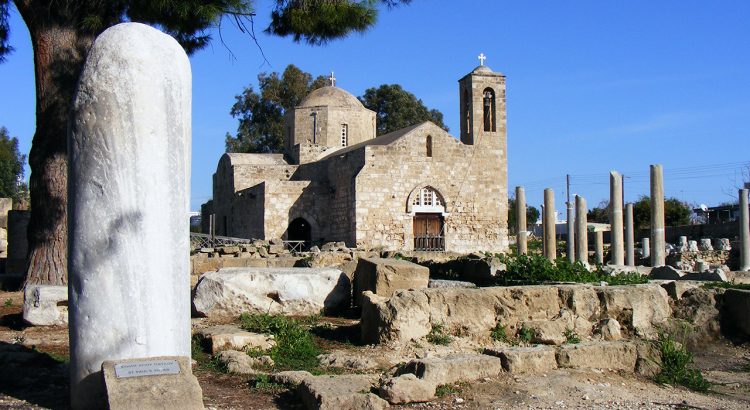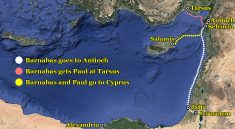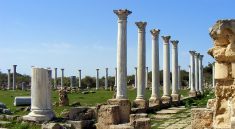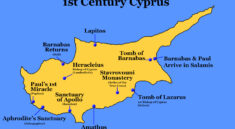Paphos was the seat of the Roman government and home of the Proconsul Sergius Paulus, appointed by the Senate of Rome in Cyprus. “There they met a Jewish sorcerer and false prophet named Elymas, who was an attendant of the proconsul, Sergius Paulus.” [Acts 13:6]
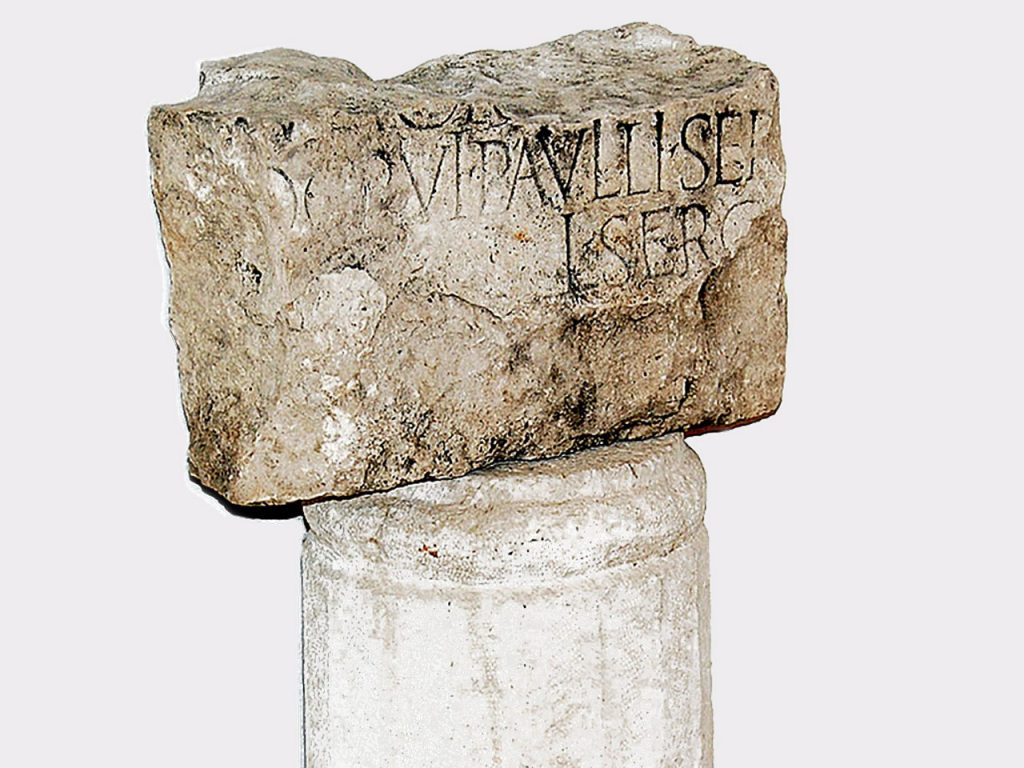
It was common for Roman officials to retain the services of Jewish civic leaders as close personal counselors and advisers throughout the Empire. Elymas, therefore, was almost without doubt an extremely highly placed Jewish official within the local Jewish community. Mathew Henry has the following to say about Elymas and his relationship to Sergius Paulus in his commentary on Acts 13:6: “He was hanging on at court, was with the deputy of the country. It does not appear that the deputy called for him, as he did for Barnabas and Saul; but he thrust himself upon him, aiming, no doubt, to make a hand of him, and get money by him.”
Barnabas and Saul arrive at the Paphos Synagogue
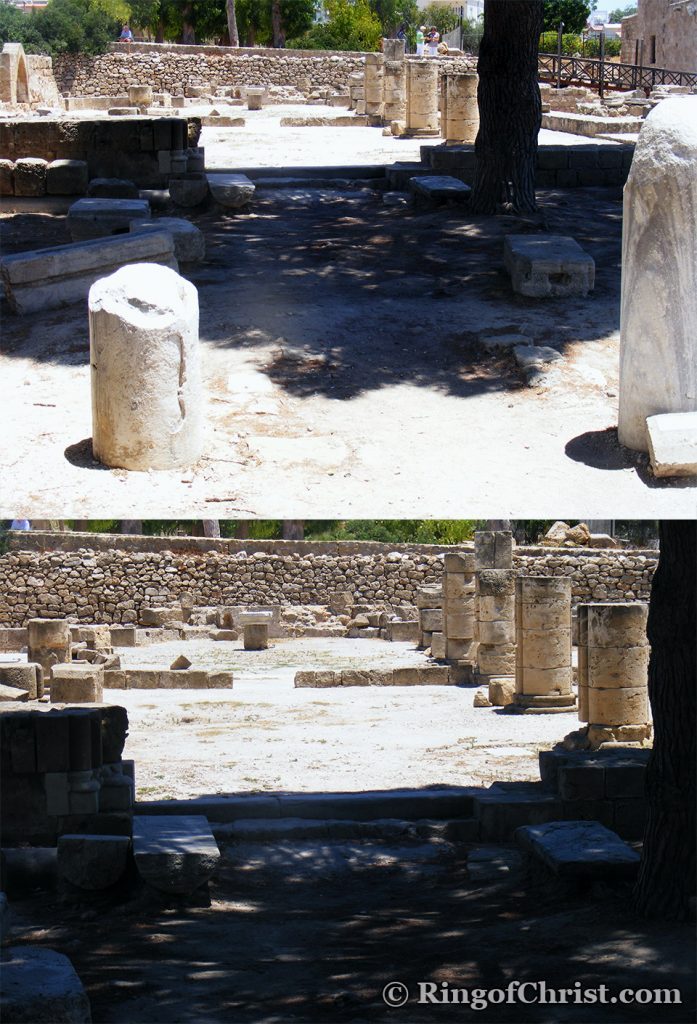
When Barnabas and Saul arrived in Paphos, they would have gone to the local synagogue – as was their custom during the entire journey – and would have begun to preach the Good News. Their message, which was quite probably received favorably by more than a few members of the congregation, served to outrage the highly placed Jewish Elymas, who , as tradition holds, ordered Saul to be tied to the pillar and given the “39 lashes ”, perhaps the first of the five Paul himself said that he received. “Five times I received from the Jews the forty lashes minus one.” [Corinthians 2 11:24]
Paul whipped in Paphos
There is a strong tradition in Cyprus that Paul was whipped in Paphos at the hands of the Jews led by Elymas (Bar-Jesus,) who tried to stop Paul from meeting with the proconsul, Sergius Paulus [Acts 13:6-8] ‘to prevent the proconsul’s conversion to the faith.”
The punishment of 39 lashes for intentional sin has also been traditionally used for the atonement of sin on Erev Yom Kippur. At that time, certain Jewish communities used a special column in the synagogue to which the one being lashed would be tied. The one being lashed recited a part of a psalm three times during the lashing. “And he is merciful, will atone for iniquity, and will not destroy, and will greatly restrain his anger, and will not stir his full wrath.” [Psalms 78:38] Three lashes for each Hebrew word.
According to Deuteronomy 25:2-3, “If the one who is in the wrong deserves a flogging, the judge must have him laid on the ground and flogged in his presence, the number of strokes proportionate to his offence. He may impose forty strokes but no more; otherwise, by the infliction of more, serious injury may be caused and your brother be humiliated before you.”
After the lashing, the man was purified by immersion in a mikveh in fulfillment of that which is written. “We have come through fire and water.” [Psalms 66:12]
Why was Paul beaten in Paphos?
Were Paul’s beatings meant to make him ‘atone’ for preaching Christianity? Is the pillar at St. Paul’s church truly a part of our early Christian history, for indeed the ruins are of an ancient synagogue. There are many questions that are difficult, or in some cases, impossible to answer. There are, however, other sources like Acts of Barnabas which can answer many questions when one considers its provenance and authenticity.
This pillar at St Paul’s church in Paphos, once the site of an ancient synagogue, is visited by countless pilgrims from around the globe to this day. The ancient synagogue, located only a few hundred yards from the Proconsul’s villa, the site of Paul’s first miracle, holds a special place in early Christian history, due to its intimate connection with the first missionary journey.
The Site of Paul’s first Miracle
News of Paul’s beating would have spread through the local community like wildfire, reaching even the ears of Sergius Paulus, the Roman Proconsul.
More than a little intrigued, not only by these developments within his realm, but also by the revolutionary nature of the Christian message, the Proconsul sent for Barnabas and Saul, who arrived closely followed by the irate Elymas.
Though he tried, Elymas (Barjesus) could not stop the Proconsul from meeting with Barnabas and Paul. The Proconsul, ‘a man of intelligence,’ granted an audience with the two to hear what they had to say. It was during this encounter in the Proconsul’s audience chambers that Saul struck Elymas blind, converted Sergius Paulus to the Faith, and received the name ‘Paul’ never to be called ‘Saul’ again.
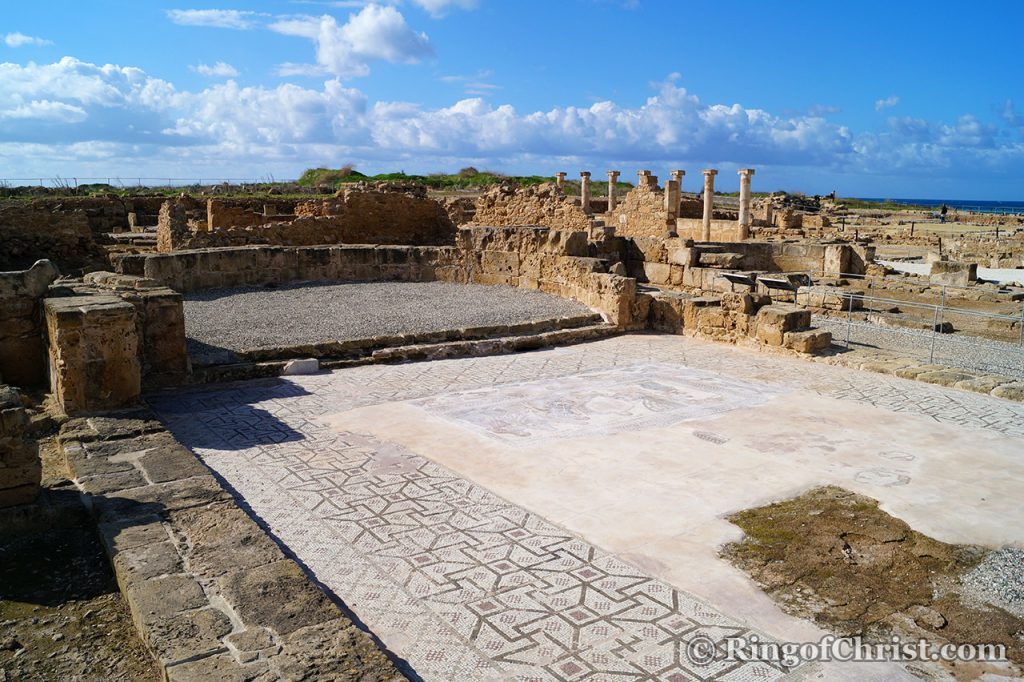
As Saul began to explain the message of Christ to Sergius Paulus, Elymas renounced him, most likely once again accusing him of sinning against Jewish law, and of blasphemy in an attempt to draw a punitive response from the Proconsul. Paul, filled with the Holy Spirit, turned on the Jewish advisor Elymas and exclaimed:
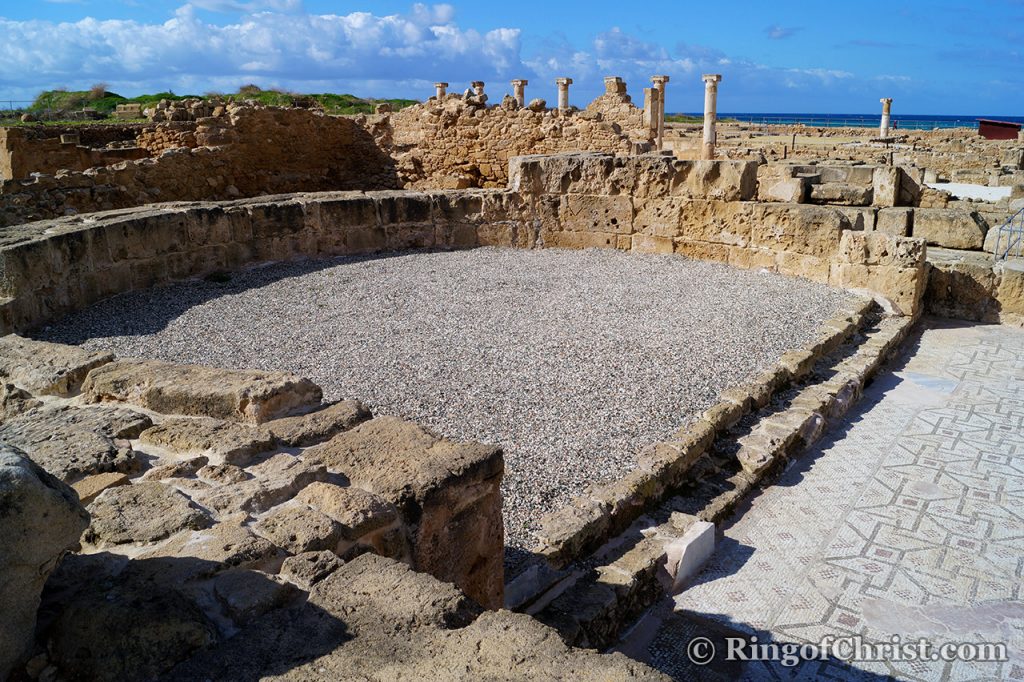
“You are a child of the devil and an enemy of everything that is right! You are full of all kinds of deceit and trickery.
Will you never stop perverting the right ways of the Lord?
Now the hand of the Lord is against you. You are going to be blind, and for a time you will be unable to see the light of the sun.“
In an instant, Elymas lost his sight, fumbled around and was led from the chamber.
Surely the pagan Sergius Paulus was astounded by this miracle performed before his very eyes. In fact, so taken aback was he by the Lord’s power, that he converted to the Faith.
Saul becomes Paul
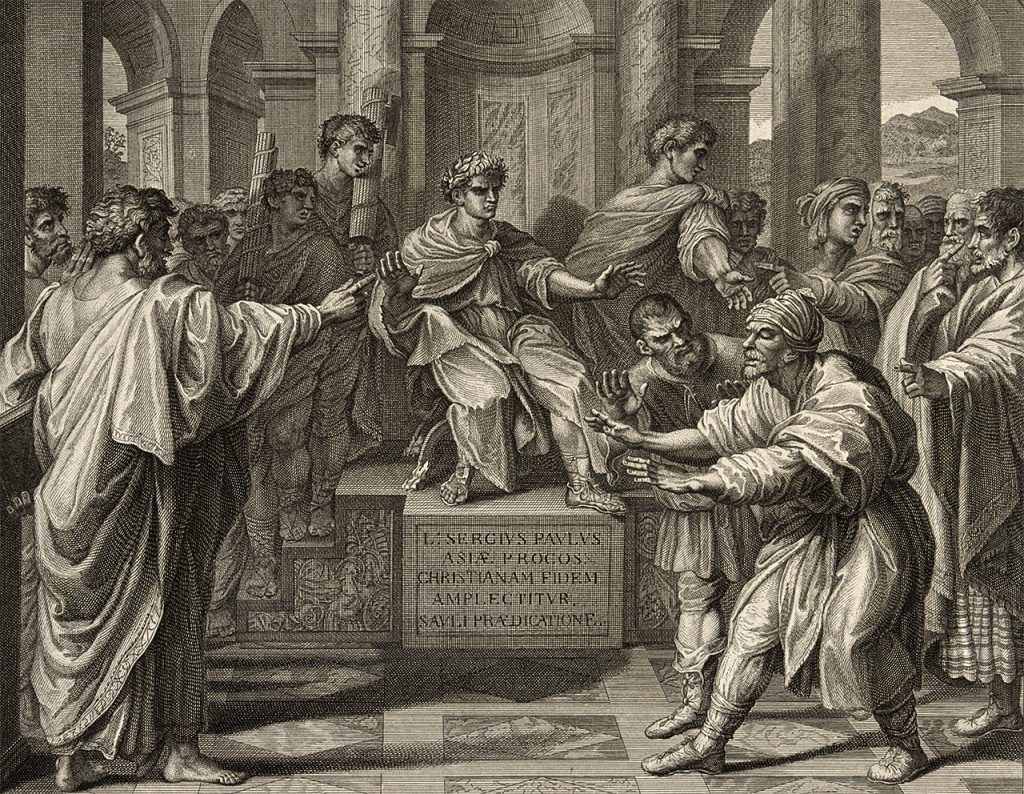
Once again, the great historian Mathew Henry tells us: “Sergius Paulus himself gave him the name Paulus in token of his favour and respect to him, as Vespasian gave his name Flavius to Josephus the Jew.” In all previous references in the New Testament, he was exclusively referred to as Saul or Saul of Tarsus, but from this moment in Sergius Paulus’ audience chamber onward he is exclusively referred to as Paul.
Visiting Paphos’ Archaeological Sites makes Acts 13 come Alive
Acts 13 contains a mere nine verses (5-13) which tell us of the initial stage of Barnabas and Paul’s first missionary journey, yet, one may piece together not only a plausible, but actually a probable sequence of the events which gave the pair the opportunity not only to perfect their missionary and preaching skills, but to circumvent the formidable adversary, Elymas the Jewish sorcerer, at least until Barnabas’ later return to the island.
That conflict spectacularly culminated in Paul’s first recorded miracle and the conversion to the Faith of a high Roman official. By the time the two of them left Paphos for Perga, their journey across Cyprus, which incidentally was Barnabas’ birthplace, had readied them for the difficulties that lay ahead as they spread the Word across the lands that Christ is the Messiah, promised to the Jews.
